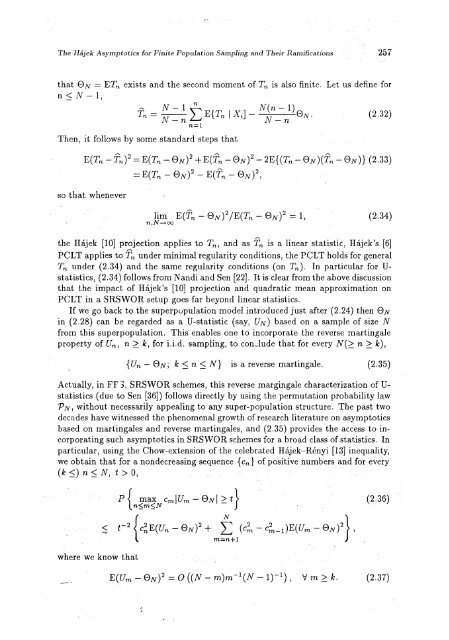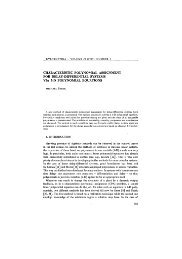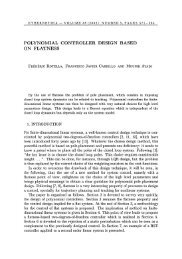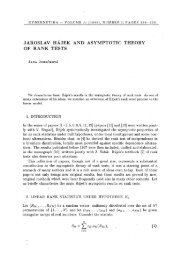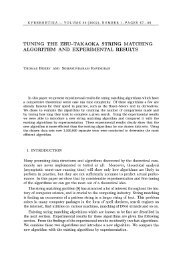n - Kybernetika
n - Kybernetika
n - Kybernetika
Create successful ePaper yourself
Turn your PDF publications into a flip-book with our unique Google optimized e-Paper software.
The Hajek Asymptotics for Finite Population Sampling and Their Ramifications 257<br />
that Q N — ET n exists and the second moment of T n is also finite. Let us define for<br />
n < N- 1,<br />
» = ^£^„|*1-§I^W (2.32)<br />
n = l<br />
Then, it follows by some standard steps that<br />
E(T n -f n ) 2 = E(T n - S N ) 2 + E(f n - e N ) 2 - 2E{(T n -e N )(f n -S N )} (2.33)<br />
= E(T n -e^) 2 -E(f n -0 JV ) 2 ,<br />
so that whenever<br />
lim E(f n -O iV ) 2 /E(T n -0 N ) 2 = 1, (2.34)<br />
n,N-+co<br />
the Hajek [10] projection applies to T n , and as T n is a linear statistic, Hajek's [6]<br />
PCLT applies to T n under minimal regularity conditions, the PCLT holds for general<br />
T n under (2.34) and the same regularity conditions (on T n ). In particular for U-<br />
statistics, (2.34) follows from Nandi and Sen [22]. It is clear from the above discussion<br />
that the impact of Hajek's [10] projection and quadratic mean approximation on<br />
PCLT in a SRSWOR setup goes far beyond linear statistics.<br />
If we go back to the superpopulation model introduced just after (2.24) then 0^<br />
in (2.28) can be regarded as a U-statistic (say, U N ) based on a sample of size N<br />
from this superpopulation. This enables one to incorporate the reverse martingale<br />
property of U n , n > k, for i.i.d. sampling, to conclude that for every N(> n > k),<br />
{U n — OAT; k < n < N} is a reverse martingale. (2.35)<br />
Actually, in FF 3, SRSWOR schemes, this reverse margingale characterization of U-<br />
statistics (due to Sen [36]) follows directly by using the permutation probability law<br />
V N , without necessarily appealing to any super-population structure. The past two<br />
decades have witnessed the phenomenal growth of research literature on asymptotics<br />
based on martingales and reverse martingales, and (2.35) provides the access to incorporating<br />
such asymptotics in SRSWOR schemes for a broad class of statistics. In<br />
particular, using the Chow-extension of the celebrated Hajek-Renyi [13] inequality,<br />
we obtain that for a nondecreasing sequence {c n } of positive numbers and for every<br />
(k 0,<br />
where we know that<br />
P< max c m \U m -e N \>t} (2.36)<br />
[n


